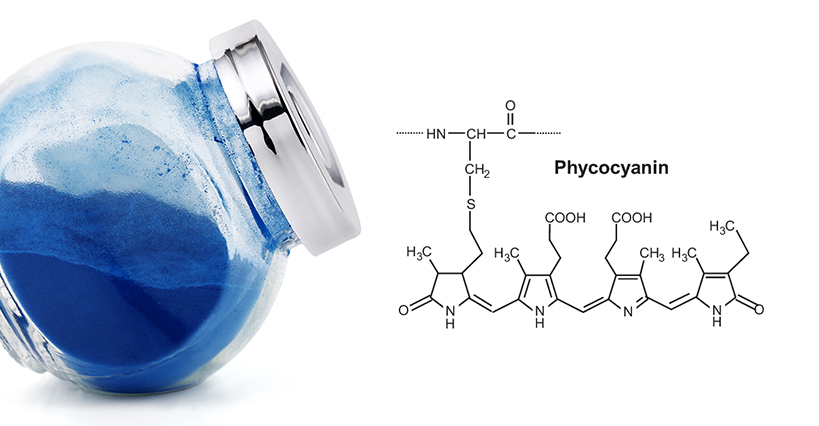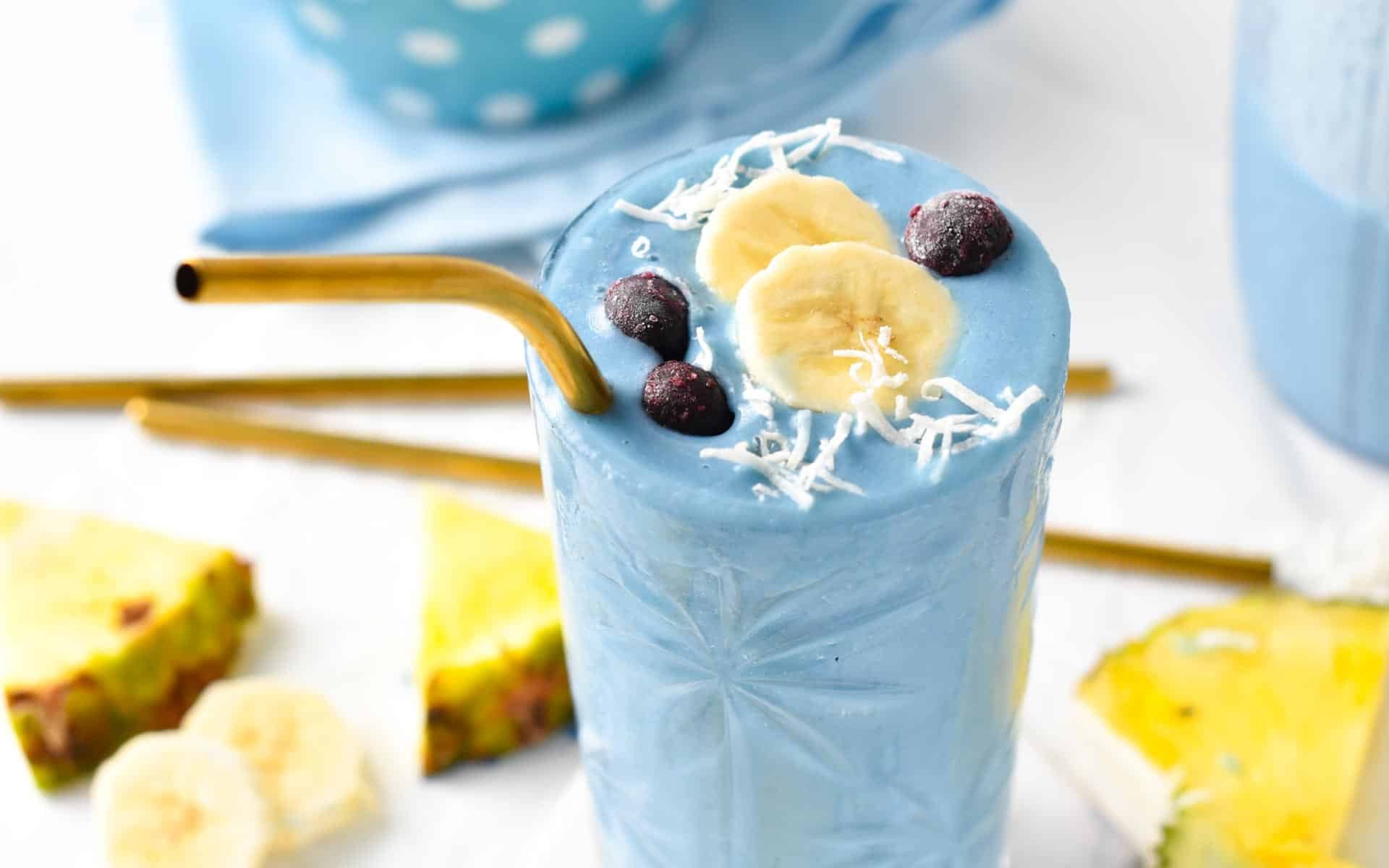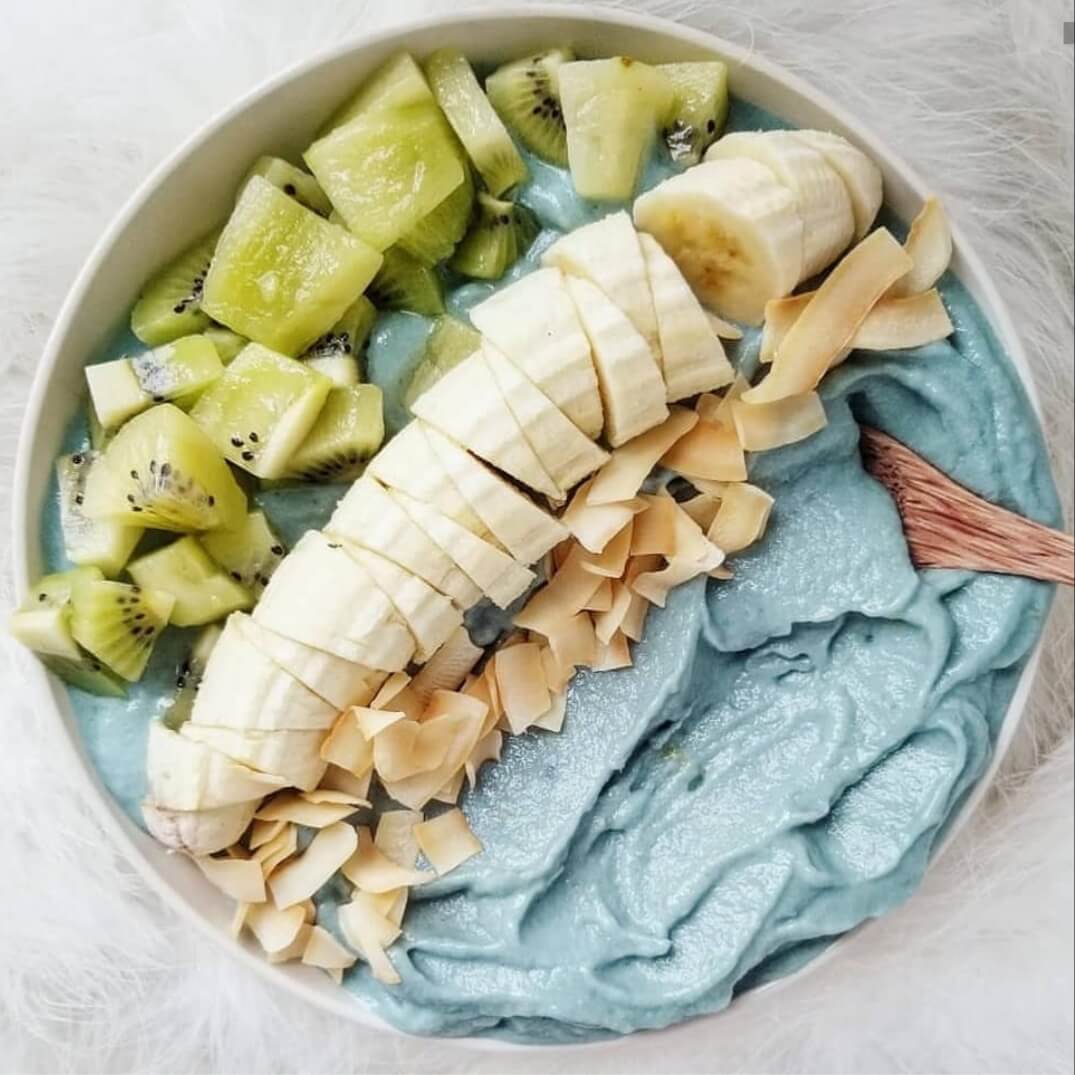Application of food additive phycocyanin in yogurt and smoothie
In recent years, demand for natural food additives has been increasing with growing awareness of the health and environmental implications of synthetic ingredients. Among the various natural pigments gaining popularity, the vibrant blue pigment from spirulina, phycocyanin, has emerged as a standout. This blog discusses the application of phycocyanin in two popular food products: yogurt and smoothies, focusing on its benefits, versatility, and appeal.

Why Natural Pigments Matter
In recent years, consumers have become increasingly concerned about the safety and environmental impacts of artificial synthetic pigments. As a result, there has been a growing interest in products marketed as "non-artificial," "natural," or "pollution-free."
This trend is not just a passing phenomenon but a meaningful movement based on health awareness and sustainability. In natural pigments, blue colors are especially hard to come by. Today, the most available blue pigments are phycocyanin, anthocyanin, and a few synthetic options. Of these, phycocyanin is highly sought after due to its bright color, nutritional content, and natural source.
What is Phycocyanin?
Phycocyanin is a water-soluble pigment-protein complex extracted from spirulina, a type of blue-green algae. Known for its intense blue color, phycocyanin is not only a pigment but also a functional ingredient with antioxidant, anti-inflammatory, and immune-boosting properties. Its safety and nutritional benefits make it a valuable addition to a variety of food products.

Application of Phycocyanin in Yogurt
Yogurt is one of the foods widely consumed in many diets, and for a long time, it has been used as a hotspot for innovation. Adding phycocyanin to yogurt provides aesthetic as well as nutritional benefits:
1. Coloration
Phycocyanin provides yogurt with the bright blue coloration, hence creating colours that stun on shelves across retail stores. Conforming to this vivid, image-worthy food, several consumers purchase these products.
2. Nutritional Enhancement
Apart from its color, phycocyanin enhances the nutritional value of yogurt. Its antioxidant capabilities can complement the naturally occurring probiotics in yogurt and provide consumers with a functional food that has multifunctional benefits.
3. Versatility
Phycocyanin can be applied to a range of yogurt products from traditional and Greek-style yogurts to plant-based yogurts using almond, soy, or coconut milk. It can be added to yogurt toppings or swirled in the base for an added visual and textural appeal.

The Rise of Smoothies and the Role of Phycocyanin
Today, smoothies have become a very popular food, and consumers can find all kinds of smoothies on social media.
Why Are Smoothies So Popular?
There are many reasons why smoothies have gained immense popularity:
1. Ease of Preparation: Smoothies are simple to make and require minimal culinary skills. Almost every adult can whip up a delicious smoothie with ease.
2. Aesthetic Attractiveness: Smoothies are colorful, vibrant, and highly customizable, which makes them appealing in visual presentations. Many would compare making a smoothie to creating a piece of art.
Nutritional Advantages: Smoothies contain lots of fruits, vegetables, and superfoods, making them both delicious and nutritious.
3. Social Media: Social networks are filled with inspiration featuring smoothies as banana smoothies, strawberry smoothies, and pink pitaya smoothies.

Why Phycocyanin Smoothies Are Popular
Currently, the most sought-after smoothie on social media is the phycocyanin smoothie. Its color, a vivid and clear blue, catches consumers' attention. Many people add phycocyanin to create ocean-inspired smoothies that are simply beautiful and different. The endless creativity of phycocyanin allows for creating blue smoothies, purple by combining phycocyanin blue and red, or even green with a touch of yellow.
Phycocyanin smoothies are not only beautiful; they are also healthy. Phycocyanin is rich in protein and has been cleared by the FDA as a natural, healthy additive. For anyone looking to try a healthy and aesthetically pleasing blue smoothie, phycocyanin is a great choice.
Recipe: Phycocyanin Smoothie
Ingredients:
4 frozen bananas
1 cup frozen mango
1/2 cup plant-based milk
2-3 teaspoons blue spirulina (phycocyanin)
Instructions:
Combine all ingredients in a blender and blend until well combined.
Pour the smoothie mixture in bowls.
Garnish your smoothie with bowl fruit, granola, coconut, nuts, and other toppings of your choice.
Be healthy and vibrant by enjoying this healthy creation!

Conclusion
Phycocyanin is really a big step ahead in the natural food additive space, which carries aesthetic and functional benefits. Its use in yogurts and smoothies serves to illustrate the versatility of phycocyanin as it looks to gain more space within clean-label, health-oriented products. As consumer preferences are on the rise, innovations like phycocyanin will catalyze the future of the food industry.
By embracing natural pigments such as phycocyanin, brands can make a move appealing to the new wave of "eco-conscious consumers" while pushing toward a more sustainable food system.
References:
https://www.ncbi.nlm.nih.gov/pmc/articles/PMC2788188/
https://www.ncbi.nlm.nih.gov/pubmed/23754631
https://www.ncbi.nlm.nih.gov/pmc/articles/pmid/18039384/
https://www.ncbi.nlm.nih.gov/pubmed/19298191
https://www.ncbi.nlm.nih.gov/pubmed/20010119
https://www.ncbi.nlm.nih.gov/pubmed/16944194
ftp://ftp.fao.org/docrep/fao/011/i0424e/i0424e00.pdf
https://www.ncbi.nlm.nih.gov/pmc/articles/PMC4728993
https://www.ncbi.nlm.nih.gov/pmc/articles/PMC7736300
https://www.ncbi.nlm.nih.gov/pubmed/20560112
https://www.ncbi.nlm.nih.gov/pubmed/27293463
https://www.ncbi.nlm.nih.gov/pubmed/11731916
https://www.ncbi.nlm.nih.gov/pubmed/15242017
https://www.ncbi.nlm.nih.gov/pubmed/19632306


